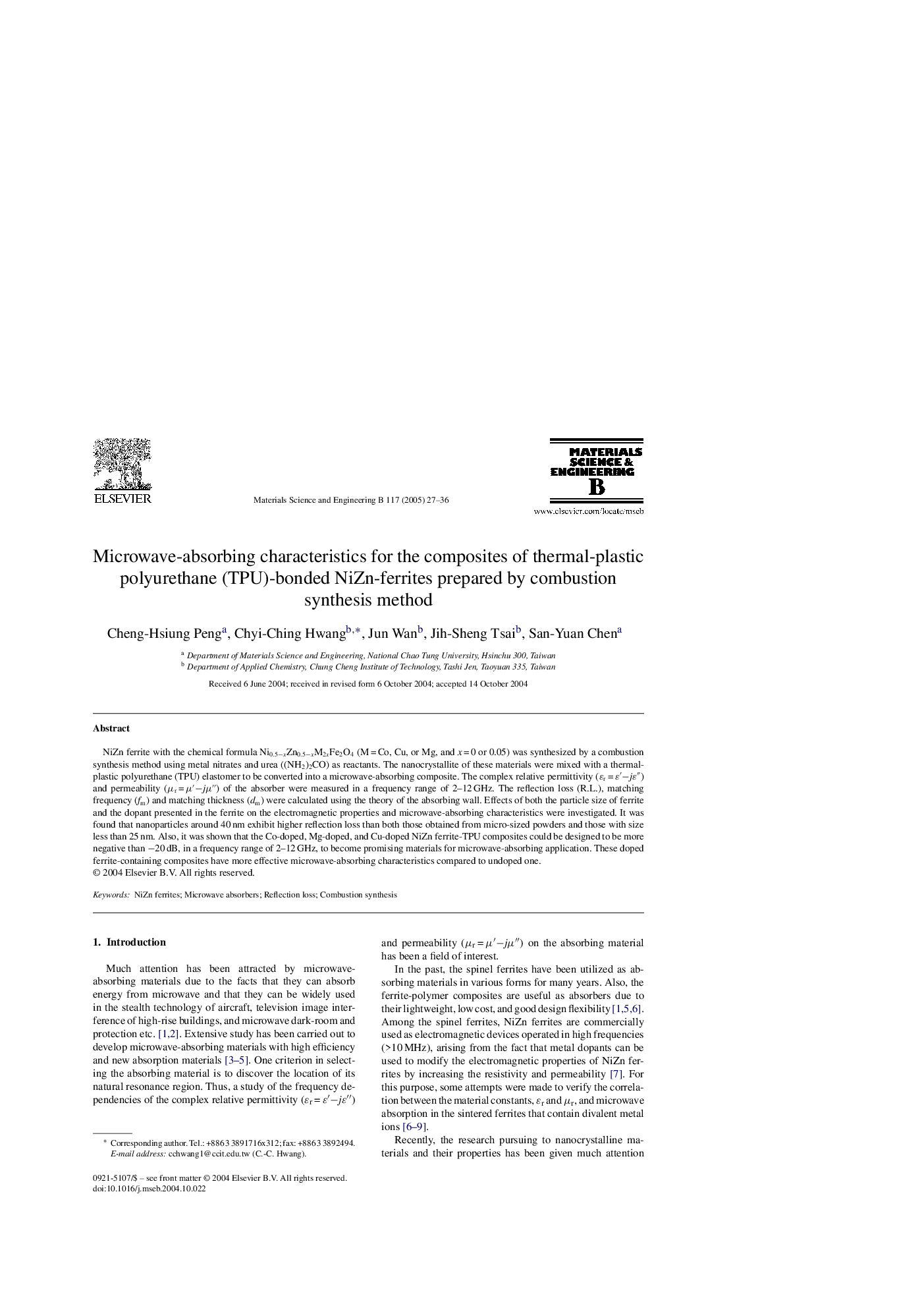| Article ID | Journal | Published Year | Pages | File Type |
|---|---|---|---|---|
| 10640259 | Materials Science and Engineering: B | 2005 | 10 Pages |
Abstract
NiZn ferrite with the chemical formula Ni0.5âxZn0.5âxM2xFe2O4 (M = Co, Cu, or Mg, and x = 0 or 0.05) was synthesized by a combustion synthesis method using metal nitrates and urea ((NH2)2CO) as reactants. The nanocrystallite of these materials were mixed with a thermal-plastic polyurethane (TPU) elastomer to be converted into a microwave-absorbing composite. The complex relative permittivity (Ér = Éâ²âjÉâ³) and permeability (μr = μâ²âjμâ³) of the absorber were measured in a frequency range of 2-12 GHz. The reflection loss (R.L.), matching frequency (fm) and matching thickness (dm) were calculated using the theory of the absorbing wall. Effects of both the particle size of ferrite and the dopant presented in the ferrite on the electromagnetic properties and microwave-absorbing characteristics were investigated. It was found that nanoparticles around 40 nm exhibit higher reflection loss than both those obtained from micro-sized powders and those with size less than 25 nm. Also, it was shown that the Co-doped, Mg-doped, and Cu-doped NiZn ferrite-TPU composites could be designed to be more negative than â20 dB, in a frequency range of 2-12 GHz, to become promising materials for microwave-absorbing application. These doped ferrite-containing composites have more effective microwave-absorbing characteristics compared to undoped one.
Related Topics
Physical Sciences and Engineering
Materials Science
Electronic, Optical and Magnetic Materials
Authors
Cheng-Hsiung Peng, Chyi-Ching Hwang, Jun Wan, Jih-Sheng Tsai, San-Yuan Chen,
